2020 Census of Population
2020 Census of Population and Housing
HOUSEHOLD AND INSTITUTIONAL POPULATION

Total population comprises of the population belonging to a household and those population belonging to an institution.

In 2020, 99.6 percent of the total population were belonging to a household. 5,223,802 of the 5,243,536 of the total population. 19,734 were considered institutional population as they were enumerated in institutional living quarters – such as hospitals, orphanges and military camps. Half of this population were in Davao del Norte.

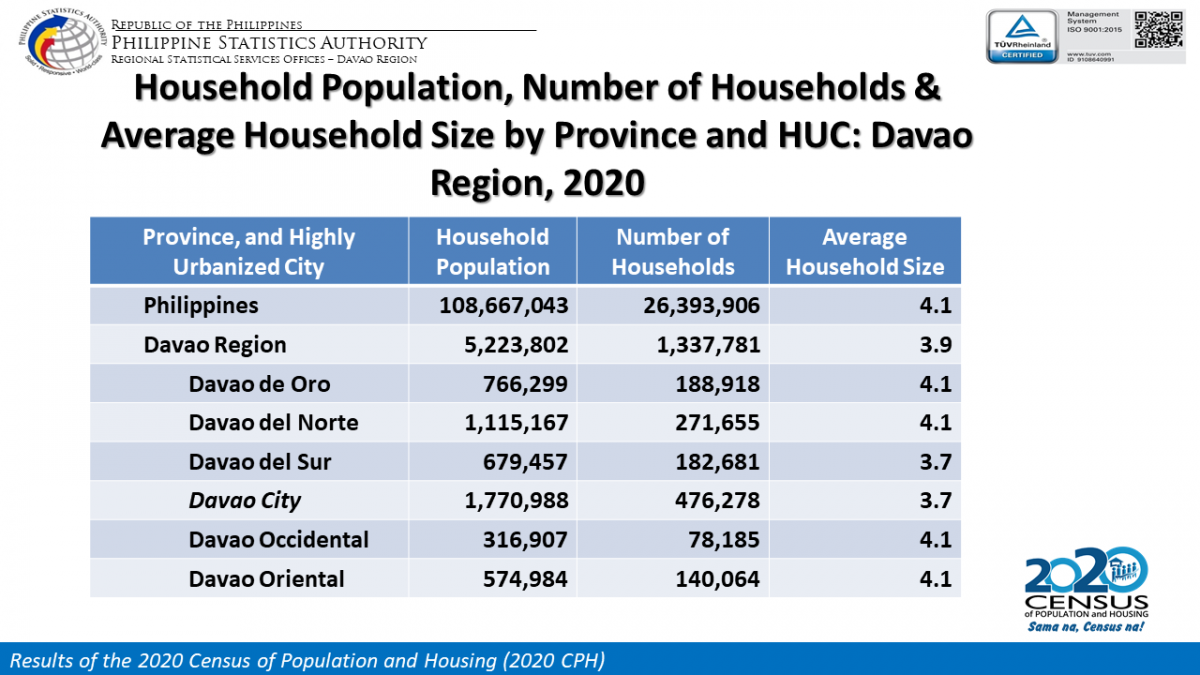


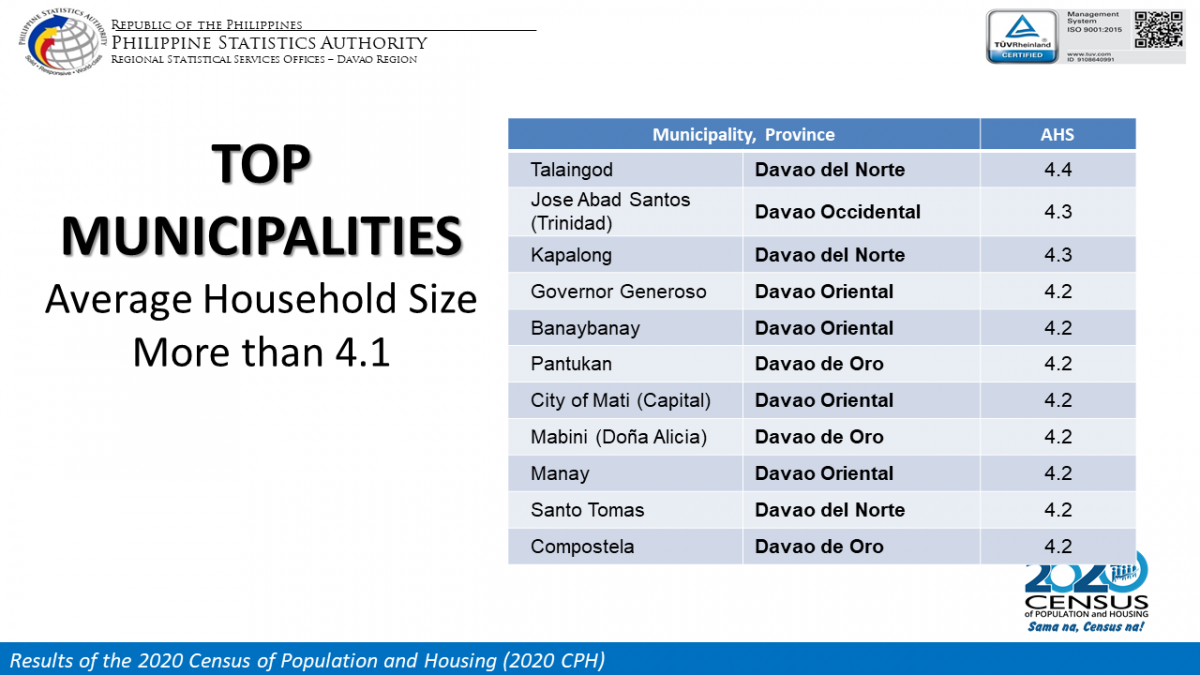

TOTAL POPULATION
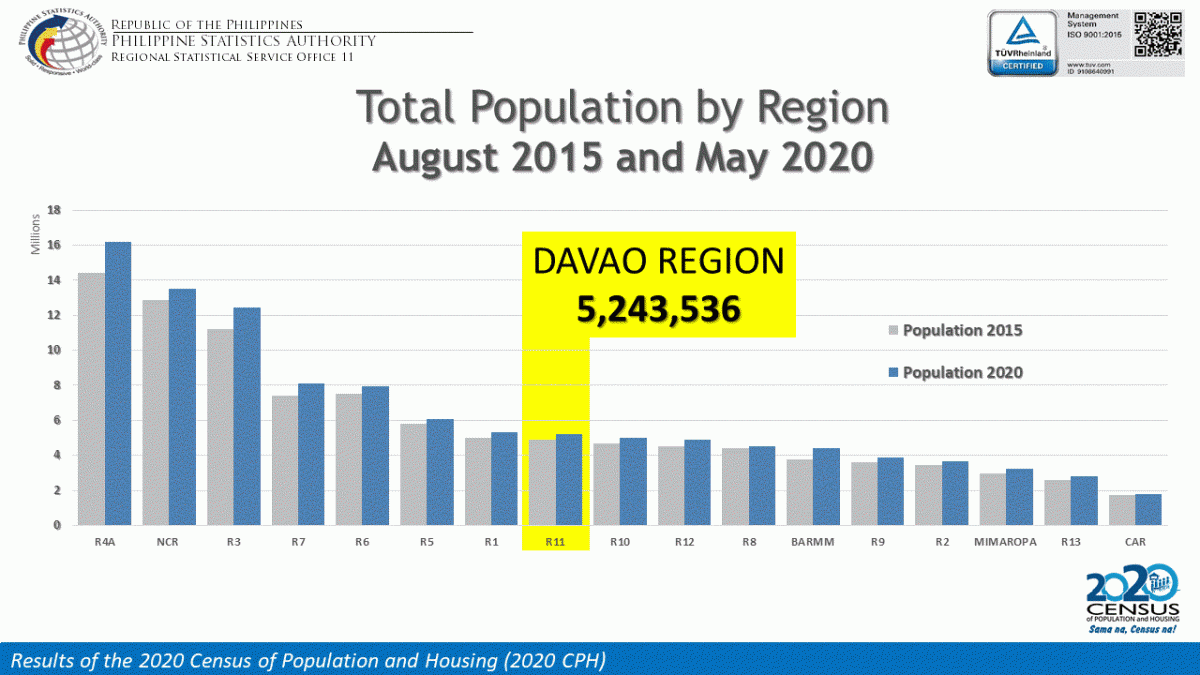
Placing 8th among regions in terms of population size is Davao Region. The population of the Davao Region as of May 1, 2020 was 5,243,536.Comprising 4.8% of the total population of the country.
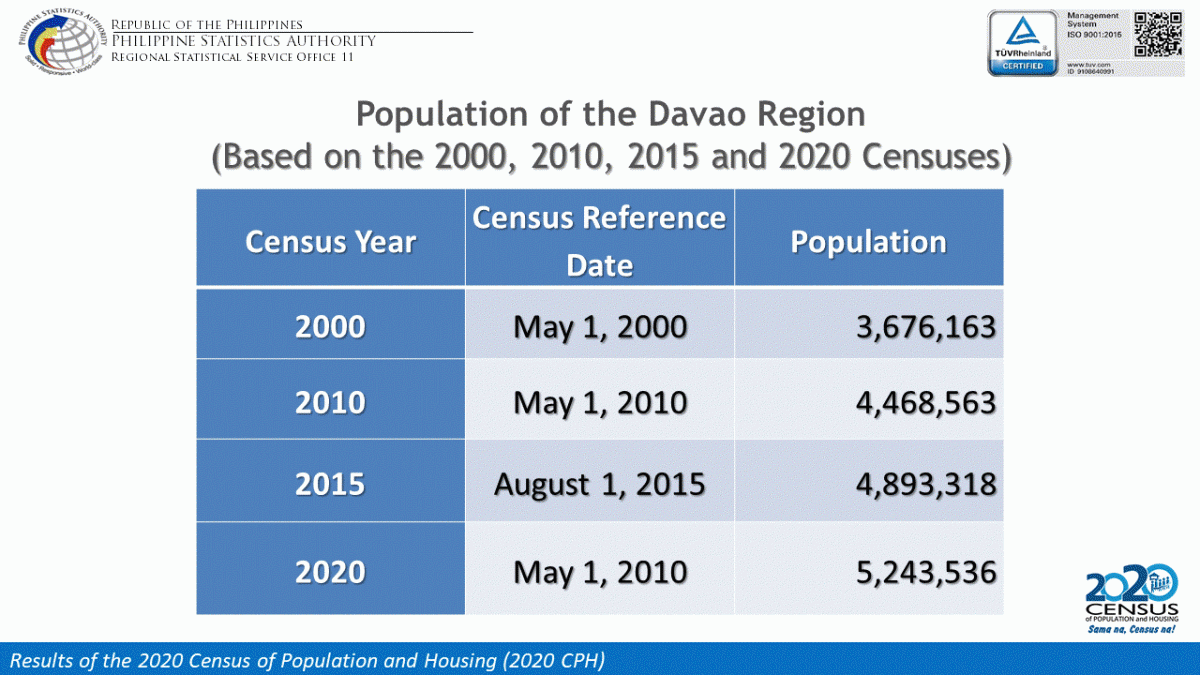
The 2020 total population of the region is higher by 0.35 million compared with the population of 4.89 million in 2015; by 0.77 million compared with the population of 4.47 million in 2010; and by 1.57million compared with the population of 3.68 million in 2000.

The total population of Region XI increased by 1.46 percent annually, on average, during the period of 2015 to 2020. By comparison, the rate at which the region’s population grew during the period of 2010 to 2015 was higherat 1.74 percent.
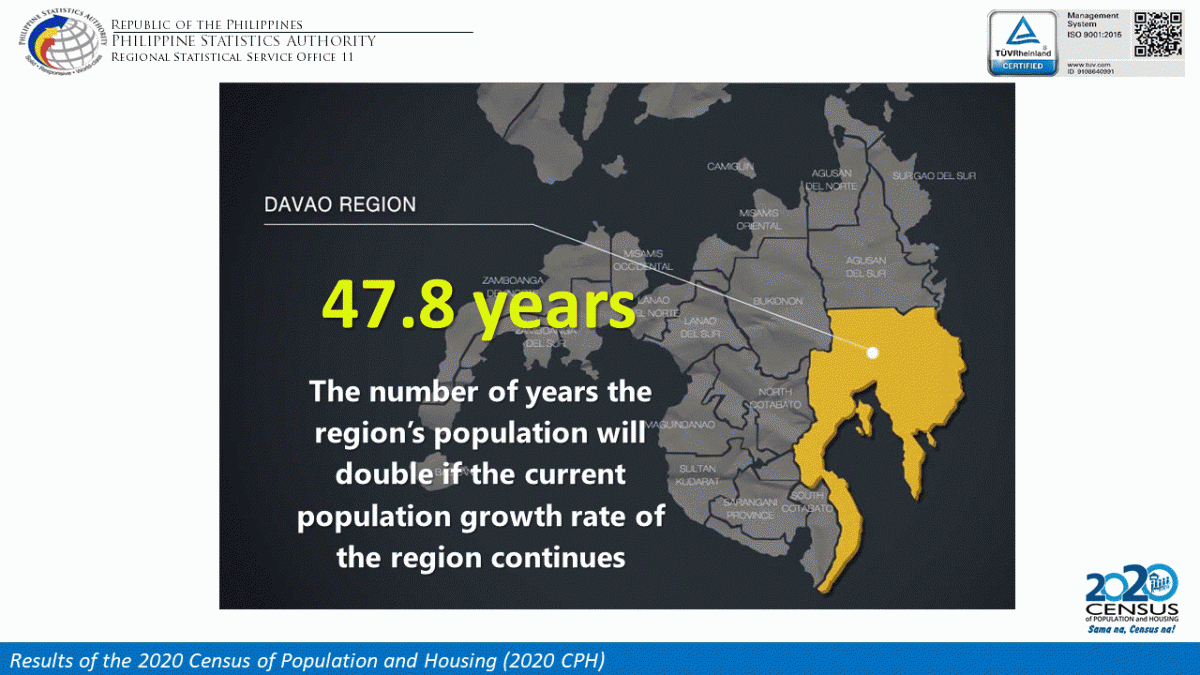
If the population continues to grow at an annual rate of 1.46 percent, the region will double its size in 47.8 years. The doubling time is the time it takes for a population to double in size.
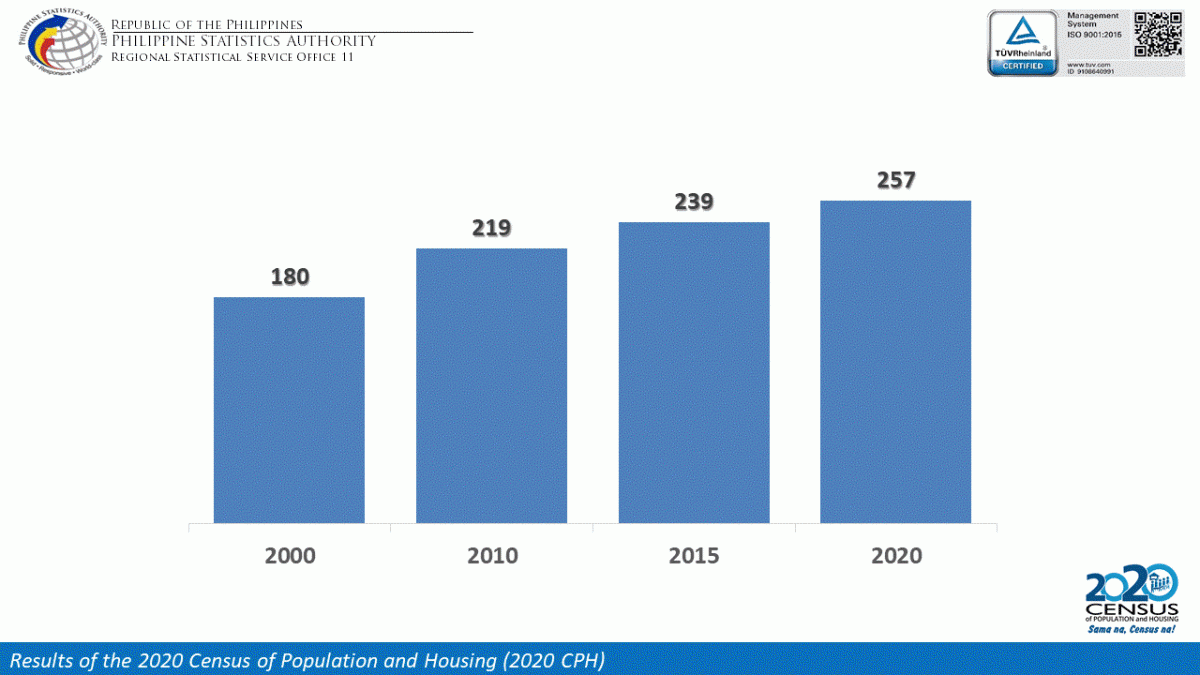
With a total land area of approximately 20,433.38 square kilometers, the population density of the Davao Region in 2020 was posted at 257 persons per square kilometer. This represents an increase of 18 persons per square kilometer from the population density of 239 persons per square kilometer in 2015. In 2010, there were 219 persons residing in every square kilometer of land as compared to 180 persons in 2000.
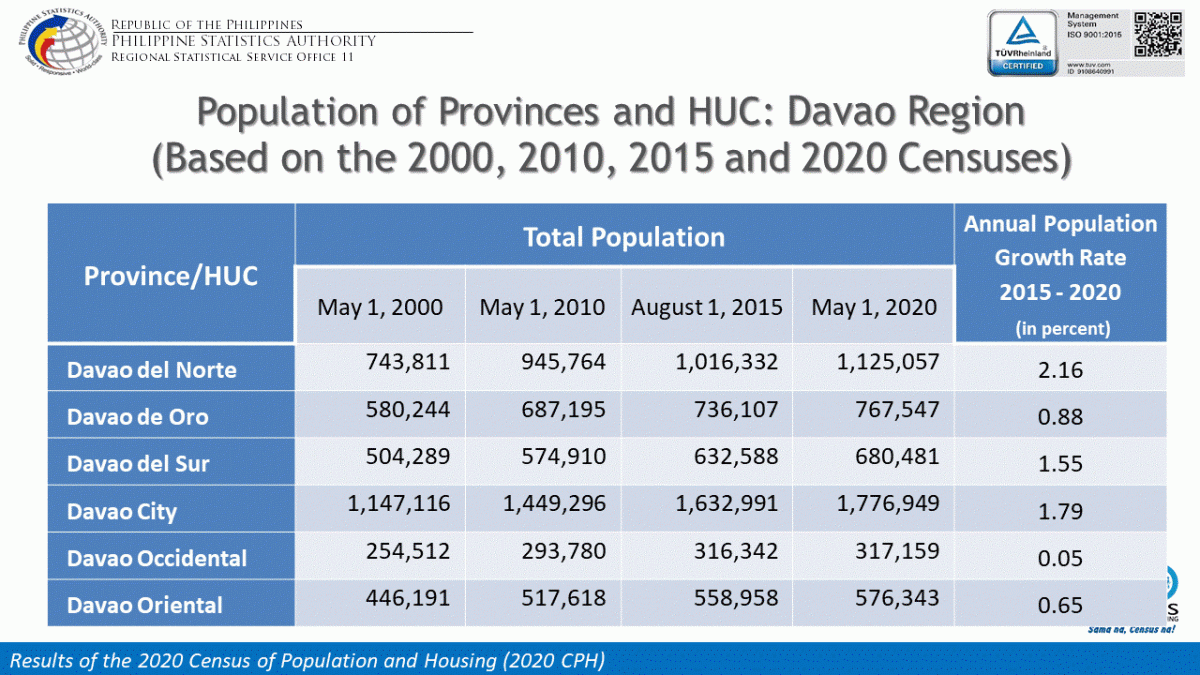
Among the five provinces comprising the region, Davao del Norte had the biggest population in 2020 with 1.13 million, followed by Davao de Oro (Compostela Valley) with 768 thousand, Davao del Sur with 680 thousand, and Davao Oriental with 576 thousand. Davao Occidental had the smallest population with 317 thousand. City of Davao, the only highly urbanized city in the region, posted a population of 1.78 million.
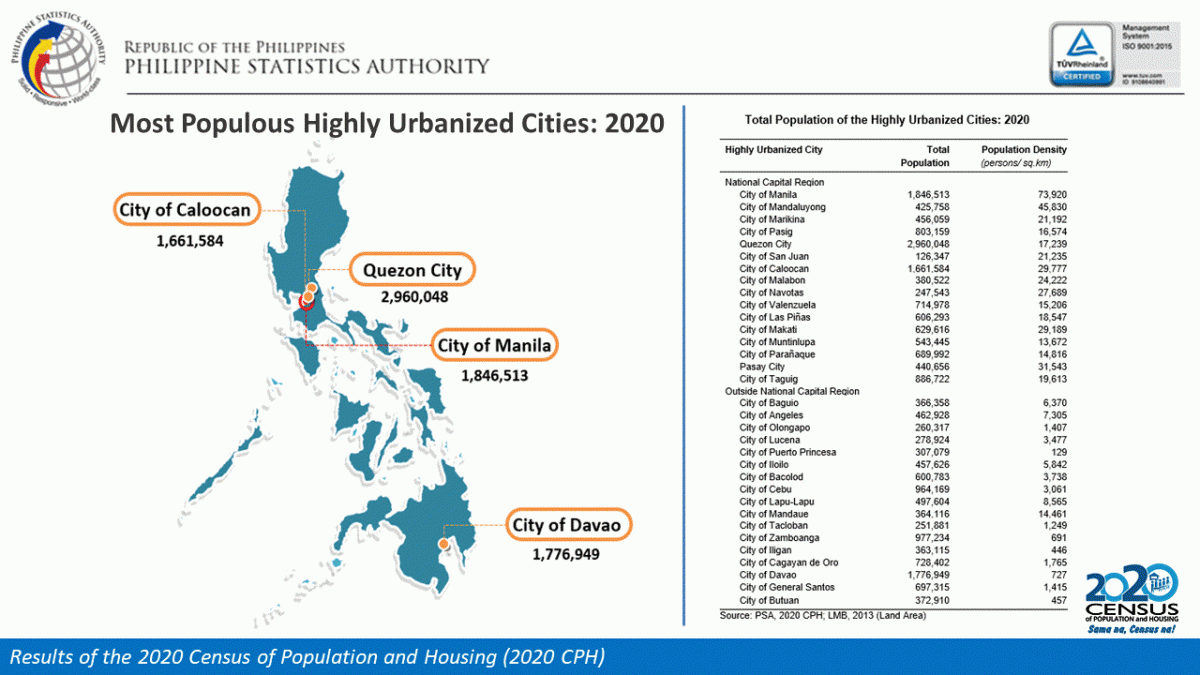
As of 2020, the Philippines has 33 highly urbanized cities (HUCs). Four (4) of these HUCs had surpassed the one million population mark, namely, Quezon City (2.96 million), City of Manila (1.85 million), City of Davao (1.78 million), and City of Caloocan (1.66 million). The City of Davao is the biggest city outside the National Capital Region.
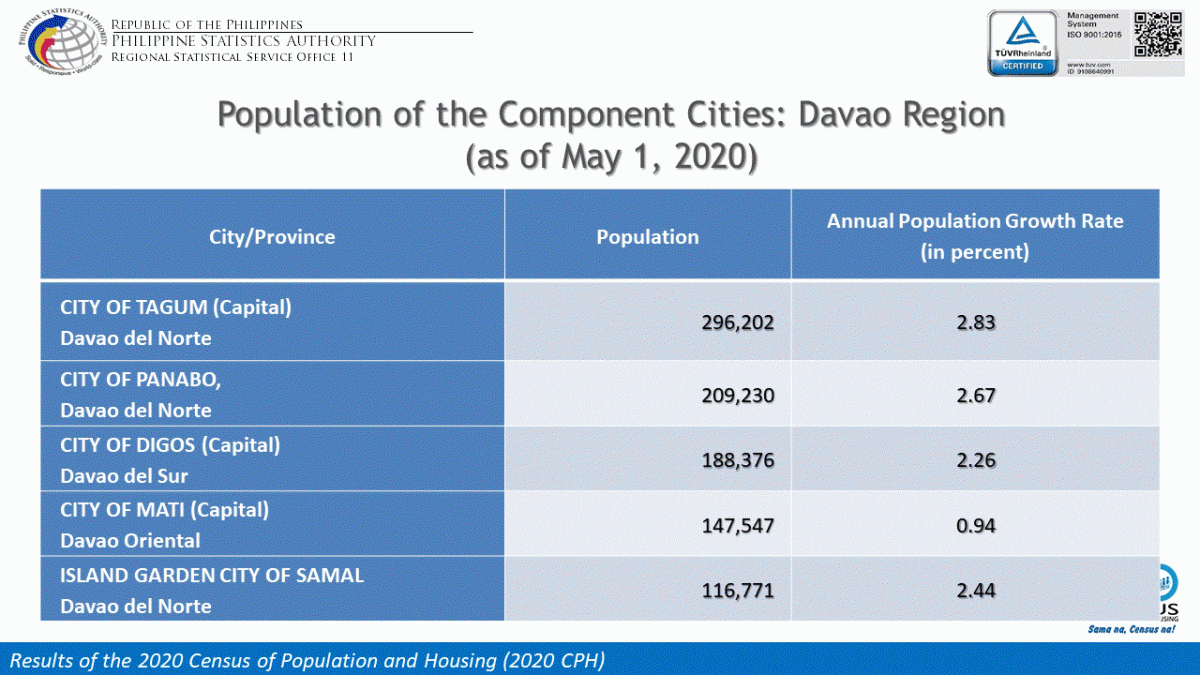
The region has 5 component cities. Of these cities, City of Tagum (Davao del Norte) was the most populous in 2020 with 296,202 persons, followed by City of Panabo (Davao del Norte) (209,230 persons), and City of Digos (Davao Del Sur) (188,376 persons). Moreover, the City of Tagum is the fastest growing city, growing at an annual growth rate of 2.83 percent, Slowest is the City of Mati 0.94 percent.
